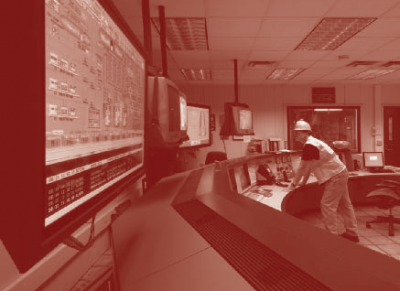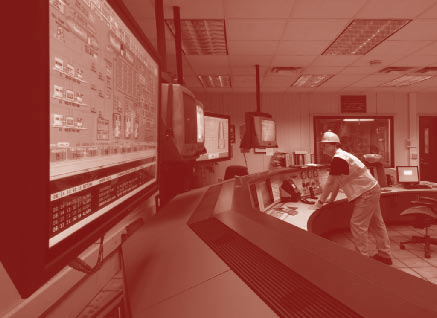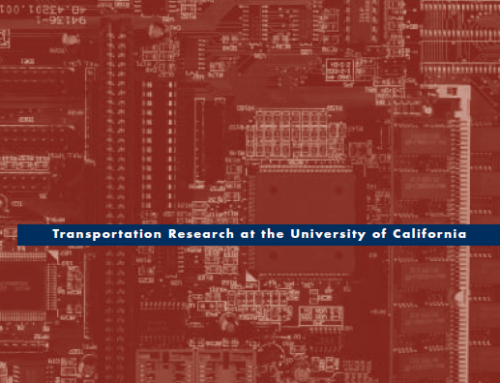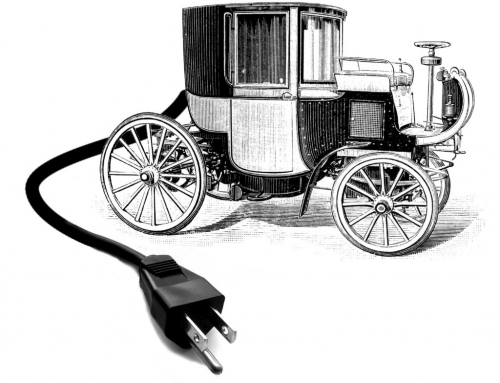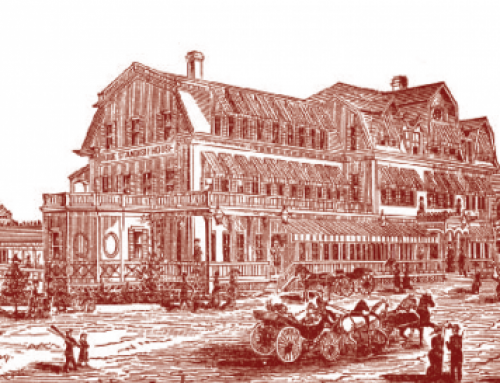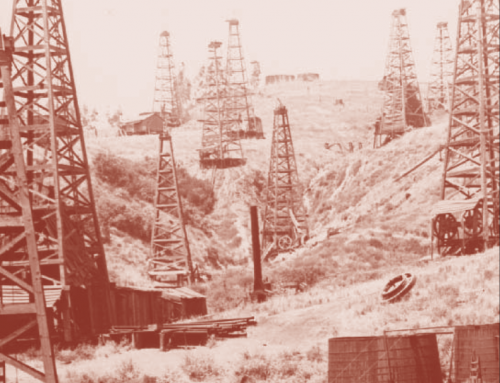If you’ve seen an electronic message sign along the highway that tells you how long it will take to get downtown or to the airport, or paid your toll or your parking fees with an electronic tag, or ridden a bus that triggered the traffic lights to turn green as it approached them, then you have experienced some of the benefits of Intelligent Transportation Systems (ITS)—an umbrella term for a variety of new technologies and operations methods for highways and transit. Other on-the-ground ITS applications are less visible to the average traveler, but every bit as useful: they help traffic managers detect and respond to accidents promptly, handle the extra traffic that special events generate, and help state workers safely plow snow on mountain roads in blinding snowstorms.
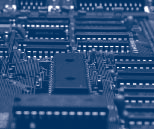 ITS proponents see an even bigger future for new technologies in transportation—applications that could transform the way transportation systems are designed, operated, and used. To paraphrase one expert: Imagine that car crashes are rare events, traffic flows smoothly even in rush hour, travel times are reliable, up-to-the-minute travel information is ubiquitous, and pollution and wasted fuel from traffic jams are a thing of the past. This vision of Intelligent Transportation Systems has attracted billions of dollars of R&D funding and some of the best minds in the field, both in university research groups and in the private sector, over the past two decades.
ITS proponents see an even bigger future for new technologies in transportation—applications that could transform the way transportation systems are designed, operated, and used. To paraphrase one expert: Imagine that car crashes are rare events, traffic flows smoothly even in rush hour, travel times are reliable, up-to-the-minute travel information is ubiquitous, and pollution and wasted fuel from traffic jams are a thing of the past. This vision of Intelligent Transportation Systems has attracted billions of dollars of R&D funding and some of the best minds in the field, both in university research groups and in the private sector, over the past two decades.
Yet Intelligent Transportation Systems also face a host of barriers, only some of which are technological. Deployment costs, funding restrictions, liability concerns, uncertain demand, institutional inertia, and political challenges have limited ITS implementation in a number of cases.
To document the key accomplishments of ITS, find out what is on the horizon, and uncover the challenges to broader implementation of technology-based transportation improvements, we conducted a series of interviews with more than two dozen technical experts and policy makers, including academics and industry experts in California and elsewhere in the US. Here we present the highlights of our findings.
Key Accomplishments of ITS
Technological improvements that emerged from ITS research are now so ubiquitous that we take them for granted. They include objects like electronic tags on car windshields for paying tolls and parking charges and “smart cards” for paying transit fares. Travelers also benefit from ITS innovations such as real-time traffic and transit information systems, from the national phone number 511 to map and directions applications for dashboard displays, cell phones, and PDAs. We barely notice that many traffic signal systems are coordinated along corridors and in grid networks, adjusting signals based on the actual numbers of vehicles present, both for daily traffic and for special events. Other ITS improvements we have come to rely on include safety technologies such as vehicle collision warning and avoidance systems and on-board driver monitoring systems for commercial vehicles, as well as freight identification and routing information systems that get baggage to the right airport and packages to the right address.
Technologies like these make travel easier and more convenient. Many of them also make the transportation system more efficient by increasing the number of people and vehicles that can be comfortably accommodated in a travel corridor. In addition, these technologies provide operators with information about the transport system that can be used for better planning, operations, and management. For example, the PeMS data management system, developed with Caltrans funding at California PATH, allows transportation agencies to store and process massive quantities of data from roadway sensors quickly and inexpensively. The resulting data sets measure traffic volumes and congestion levels, which planners use to analyze system performance and develop improvements. New sensors also instantaneously detect unusual delays and stoppages, allowing managers to dispatch emergency service vehicles far faster than previous methods of monitoring could do.
ITS technologies are already making travel safer and more environmentally friendly
Emerging Applications
As computer and wireless technologies continue to improve, ITS researchers are finding new applications for them in transportation. Recent examples include smart parking applications that direct drivers to empty parking spaces so they don’t have to cruise around looking for parking. Travelers can use their cell phones and PDAs to find transit routes and schedules from their current location or from a proposed departure point to a planned destination, and to check the arrival time of the next bus or train. Detector systems are growing more sophisticated, and can now warn motorists of ice on the pavement, pedestrians in the crosswalk, and debris in the lane ahead. Dashboard displays can now tell drivers how much fuel they are using so that they can improve their driving efficiency.
Such technologies are already making travel safer and more environmentally friendly as well as easier and more efficient, and new applications currently under development have the potential to provide significantly enhanced benefits. For example, researchers are developing vehicle-to-vehicle communication systems that would automatically warn motorists that a vehicle ahead of them is braking. These systems could also automatically slow or stop a vehicle following one that puts on the brakes. Improved information technologies and vehicle routing and scheduling algorithms will reduce how far in advance paratransit services must be reserved, for example, from 24 hours to perhaps only two or three hours in advance. Integrated weather forecasting, hazard identification, and traffic management systems will allow traffic managers to adjust speed limits and signal timings, deploy emergency services and maintenance personnel, close threatened facilities, reroute traffic, disseminate information about conditions to the public, and if necessary provide information and support for evacuations. Corridor management systems will include information on transit travel times as well as highway times. And advanced electronic freight management systems will be able to provide a single manifest for shipments being transported by several different modes.
The Implementation Challenge
Despite the proven success of many ITS applications and the promise of more to come, ITS continues to face a number of challenges. These range from communicating what new technologies can do, to expectations about the speed of implementation, to lack of funding for implementation and operations. We list several of the most common implementation challenges below.
Communicating the benefits of new technologies to decision-makers
Elected officials and agency leaders who must make decisions about whether to invest in new technology development and deployment complain about the jargon that technology developers often use—a host of abbreviations and details that busy decision-makers do not need to understand and do not want to learn. Policymakers are looking instead for a clear description of why the new or proposed technology would be beneficial: what outcomes it would produce and what it would cost compared to other ways of accomplishing the same results. Better communications would be aided by cost-benefit analyses comparing new technology to conventional approaches as well as independent evaluations of completed projects. This suggests there is a need for technology developers to partner with social scientists with expertise in evaluation methods.
Policy makers need a clear description of the benefits of new and proposed technologies
Managing expectations for near-term results
Funders want to see results from their investments in ITS, but it can take years to move a technology from “proof of concept” to full deployment. In between these two stages, it’s typical to make many refinements to the technology to improve performance and reliability and to reduce costs. Realistically, not all research results are likely to be deployable in the short or even medium term, but this is not always understood by sponsors. Yet a push for quick results can undermine technology development and reduce the prospects for success: a focus on fast implementation could miss out on longer-term but much larger payoffs. A fine balance needs to be struck between the desire for results and the premature introduction of new technologies that need more development.
Finding an appropriate role for the private sector
The private sector often plays a key role in moving technology from “proof of concept” through development and on to implementation. Private sector interest is, of course, one test of the market for a new technology, and private partners can be a major source of funding for technology development and testing. Industry and business leaders can also play important advisory roles, helping researchers identify possible markets and applications, understand the competition, and develop realistic cost and performance criteria. On the other hand, private sector involvement raises questions about intellectual property ownership, publication rights, competitive bidding obligations, and more. Case-by-case consideration of the roles that private companies can play needs to be a key part of ITS implementation planning.
Involving Users and Stakeholders
Understanding the perspectives of likely users of a new technology can improve the chances of implementation—or lead to a reconsideration of the technology project before too much money is spent on a product that will not find a sufficient market. Owners and opera- tors of public facilities often include the state department of transportation as well as numerous local governments, transit agencies, delivery services, and 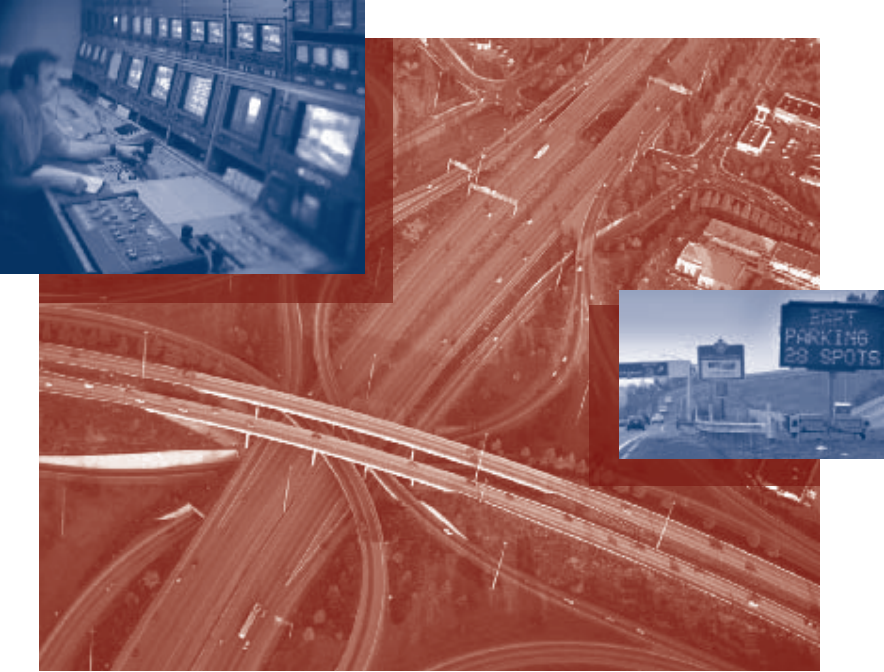 freight transporters, as well as individual drivers. Businesses and residents also have a stake in changes that affect the transportation systems they rely upon, and often will have a say in those changes. Early involvement of these diverse stakeholders can help in at least three ways: identifying likely supporters and early adopters; understanding concerns early enough to address them in product designs and deployment plans; and introducing new concepts far enough in advance that stakeholders can develop a degree of familiarity with them. On the other hand, broad- based involvement requires skills in public outreach that are quite different from those most technology developers hold. Early stakeholder involvement also may be problematic in cases where the objective is to create for-profit applications.
freight transporters, as well as individual drivers. Businesses and residents also have a stake in changes that affect the transportation systems they rely upon, and often will have a say in those changes. Early involvement of these diverse stakeholders can help in at least three ways: identifying likely supporters and early adopters; understanding concerns early enough to address them in product designs and deployment plans; and introducing new concepts far enough in advance that stakeholders can develop a degree of familiarity with them. On the other hand, broad- based involvement requires skills in public outreach that are quite different from those most technology developers hold. Early stakeholder involvement also may be problematic in cases where the objective is to create for-profit applications.
Developing Workable Business Plans
In some cases, the business plan for transportation technologies has been underdeveloped; in other cases it has been overly rigid. Moving new technologies from the lab to real- world deployment requires a detailed yet flexible business plan. Business plans can help temper unrealistic expectations. For example, public agencies have sometimes assumed that there would be a market for new technologies they develop or for data their systems produce, only to discover that other agencies are uninterested in paying for the new technology or expect data generated on public facilities to be available without charge. Business plans can also help develop suitable contract provisions for anticipated applications. Many public agencies are accustomed to detailed specifications, but with new technologies with as-yet-unknown applications, flexibility is a desirable contract characteristic. Planning ahead for this can help reduce delays and conflicts.
Business plans can help temper unrealistic expectations.
In addition, for technologies that will remain in the public sector, a long-term funding plan is needed. Although new technology applications often can be paid for using standard funding sources, funding for even well-proven technologies like highway monitoring systems has been far from a sure thing. In a number of cases, monitoring systems have been dropped from projects when budgets tightened. Maintenance funding has also been a problem. In particular, underfunding of sensor maintenance has reduced the effectiveness of this large investment in street and highway instrumentation. Making the funding plan part of the technology assessment and business plan could help overcome these difficulties.
Meeting the Challenges
The challenges to ITS implementation are serious, but they need not be barriers. The non-technological challenges can be addressed by planning and policy researchers, social scientists, and law and business experts whose know-how would complement that of the engineers and scientists who are creating new technologies. The transportation problems that new technologies aim to address have strong legal, institutional, social, environmental, and economic dimensions; research should likewise cover the broader planning and policy context as a complement to technology development. Greater attention to these complementary research needs can help move ITS technologies from special initiatives to the mainstream.
Further Readings
Elizabeth Deakin. Mainstreaming Intelligent Transportation Systems: Findings from a Survey of California Leaders (UCTC Paper no. 791, 2006).
Gregory Marsden, Karen Trapenberg Frick, A.D. May, and Elizabeth Deakin. Good Practice in the Exploitation of Innovative Strategies in Sustainable Urban Transport: City Interview Synthesis (University of Leeds, Institute for Transport Studies, forthcoming. Prepared for Volvo Research and Educational Foundations).
Larry H. Orcutt and Mohamed Y. AlKadri, “Overcoming Roadblocks Facing the Implementation of Innovations: Three Case Studies at Caltrans,” presented at TRB 88th Annual Meeting (January 11-15, 2009), Paper No. 09-3671, Transportation Research Record, forthcoming.
Ikhlaq Sidhu, J.D. Margulici, David Jacobowitz, Carleton Wong, and Rosemary DiPietrantonio. Procuring Innovation at Transportation Public Agencies. (California Center for Innovative Technology and Center for Entrepreneurship and Technology, 2008).
Alexander Skabardonis, “Benefits of Advanced Traffic Signal Systems,” in Measuring the Performance of ITS in Transportation Services, edited by David Gillen (Kluwer Academic Publishers, 2003).
Pravin Varaiya, “What We’ve Learned About Highway Congestion,” Access, no. 27, Fall 2005.

